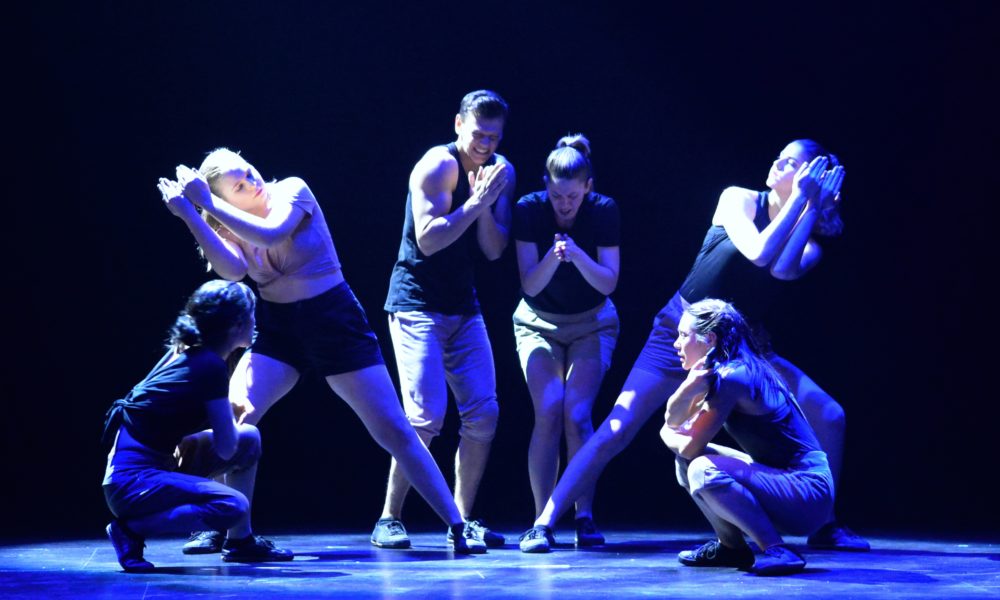Imagine watching elementary kids at recess having the time of their life as they move their bodies, mostly their hands, to the beat of happy pop music. This is what California Repertory excellently created in its play “Move: The History of a Hand.”
The play, directed by Ezra LeBank, has an ensemble cast of 13. It takes place on a thrust stage—where the audience can sit on three different sides—at the Studio Theater. The location allows characters to make the show a more interactive experience, running into the audience to climb on chairs and give high-fives.
LeBank’s play emphasizes the mobility of the human hand. It combines circus, dance, theater and visual art to showcase how individuals use their hands in everyday life for expression.
But “Move” takes a peculiar approach for a theater play.
Unlike most plays, “Move” contains very little dialogue between characters. There were no backdrops, and only a select few props were used. The characters were nameless and wore neutral-colored clothing. A character could improvise a gesture without it being noticeable to the audience.
At first, the play does not look promising, as it appears more like a dance show. At its opening, one member of the ensemble holds her hand in front of a spotlight while making unpleasant noises as she struggles to open her hand from a fist. There was no context as to what was happening.
Throughout the play, the cast would shake hands, do flips and jumps and had childish fights and dance battles. It was stunning seeing the amount of grace and strength they had to continue to do handstands and acrobatic stunts.
After one ensemble character accidentally killed another, the entire ensemble looked awkwardly at the audience to see if we were aware. As they dragged the dead girl off, two other members attempted to distract the audience by performing a talent show with their hands.
Meanwhile, the rest of the cast ran away, distressed over the dead body. This was hysterically funny, reflected in the audience’s non-stop laughter.
At times, “Move” comes across as awkward because the characters are awkward, but that is what makes it funny. It was very minimalistic, though better than most complex plays since the characters had very little dialogue to work with. They successfully conveyed their emotions through body language.
The artistic beauty of “Move” is evoked when the audience gets to decide what they are witnessing—as art is subjective—especially when there is no rhyme or reason as to what happens as the scenes change.
Cal Rep’s “Move: The History of a Hand” will be playing at the Studio Theater until Dec. 8.




